The vast majority of cars on UK roads are legally required to undergo an annual MOT test. It’s essentially a health check that makes sure your car is safe enough to be driven. It highlights any serious problems your car might already have, or be developing and, as such, it’s also a vital part of your car’s servicing regime.
In this guide, we’re going to explain what an MOT test is, which cars need one and where you need to go to get one done. We’ll also tell you how to find out when your car needs an MOT and give you some guidelines on how much one costs.
Which cars need an MOT test?
Cars sold in the UK don’t need to undergo an MOT test until they’re three years old. The test then happens annually until, in most cases, the end of the car’s life. If it reaches the ripe old age of 40, it’s then exempt from testing. However, we recommend that you still have a car tested beyond the 40-year mark to make sure it’s still fit, healthy and safe. Cars are also exempt from the test if they’re registered under a statutory off-road notice (SORN).
When does a car need an MOT test?
The exact date of a car’s MOT test can move around throughout its life. Its first test will come around on the third anniversary of when it was registered with the DVLA. You can find that date on the car’s V5C registration document. If you bought the car when it was new, bear in mind that the date of registration and the date you took delivery will probably be different.
As a car passes through the hands of multiple owners, the date its MOT test is due will probably change because most dealers sell cars with a fresh MOT. The date can also change if a car spends an extended period of time off the road, for instance if its been in storage.

How do I find out when my car’s MOT test is due?
The DVLA sends a letter to the registered keeper of every car about a month before its MOT test is due. But you don’t have to rely on that – there are ways of discovering the date for yourself.
If your car is under three years old, you can work out when its first MOT test is due from the date of first registration recorded on the V5C. For older cars, the date the current MOT expires is listed on the certificate you’re given when your car passes the test. Alternatively, you can find the due date by searching your car’s registration number on the government’s MOT check website.
Where can I get an MOT test done?
An MOT test can be carried out at any garage that’s registered as an MOT test centre with the Driver and Vehicle Standards Agency. All test centres have to display the symbol shown below on the front of their building. Pretty much every garage that does car servicing is a registered MOT centre, along with every branch of the major chains such as Halfords, Kwik Fit and National Tyres.
It’s not just the garage that has to be registered, though. Mechanics have to be fully trained and registered as MOT testers to carry them out. There’s currently a shortage of testers across the UK, so you may find some garages are unable to offer MOTs for lack of staff.
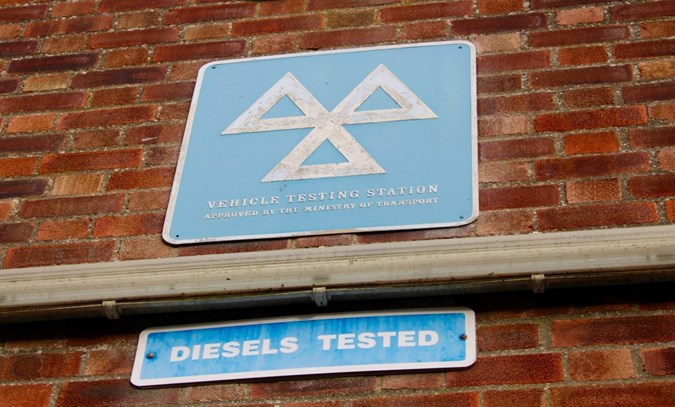
How much does an MOT cost?
The government sets a maximum cost for an MOT test of £54.85 for a passenger car with up to eight seats. But many test centres charge less than that. The maximum costs vary for other types of vehicle, for instance a motorcycle costs £29.65.
If your car is covered by a servicing plan, check the terms and conditions for whether you have to pay the test and any necessary repairs.
What happens if a car fails its MOT?
Any faults that cause a car to fail its MOT must be repaired before the car can be legally driven on the road. There’s a caveat to that, though. If you need to take the car somewhere other than the MOT centre for the repair, for instance to a tyre shop, you can do so before midnight on the day the MOT expires. Once the repair has been carried out, you can drive back to the MOT centre.
There are occasions when a car fails so badly that it becomes uneconomic to repair. If you then decide to dispose of the car, most test centres will arrange for a scrap yard to take the car away for you. Alternatively, you may be able to submit it for a scrappage scheme to get money off a new car.
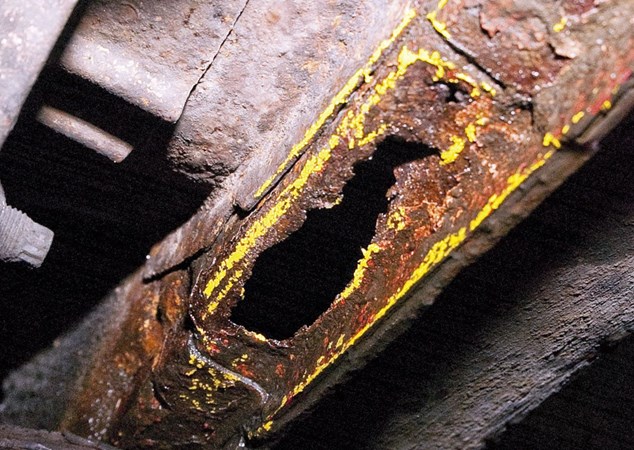
What’s on an MOT certificate?
An MOT certificate is a printed sheet of paper that the test centre gives you when you collect your car. The certificate lists the car’s details and those of the test centre, and state whether it has passed or failed. The reasons for failure are listed, as are any other faults that need monitoring – these are known as advisories.
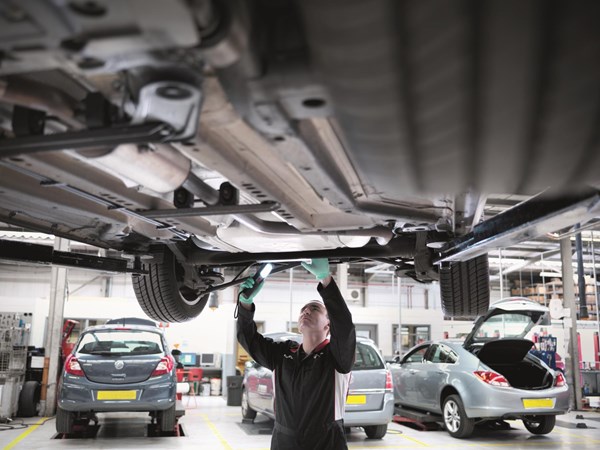
Where can I find out a car’s MOT history?
When you’re buying a used car, it should ideally come with all of its old MOT certificates as part of its service history. But, when you’re browsing, you can use the government’s MOT Check website to look up the MOT history of any car by searching its registration number. The system shows the date of each MOT, the car’s mileage at the time, whether it passed or failed and any faults that were recorded. It’s a really valuable tool that tells you a lot about the life a car has led.
Note that the system doesn’t recognise every registration and that records only go back to 2006.
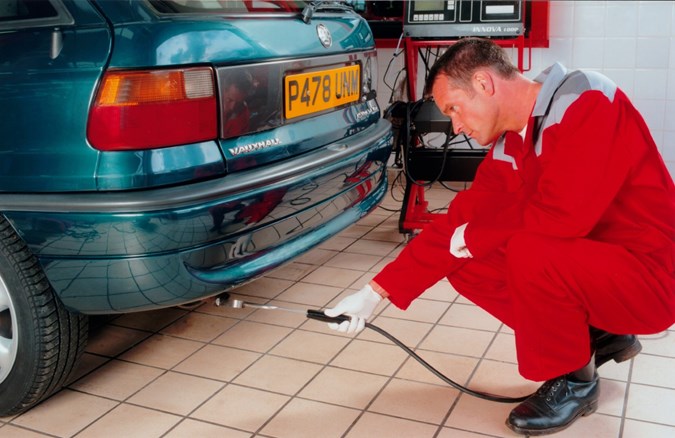
FAQs
-
What happens in an MOT test?
The point of an MOT test is to assess the condition of various parts of the car that are crucial to its safety. There’s a very long list of things that are checked including the car’s body and structural integrity; the tyres, brakes, steering and suspension; any fluid leaks or warning lights, and the exhaust emissions. You’re legally allowed to observe the test being carried out.
Any problems found are categorised by seriousness. Minor faults are recorded as needing monitoring and repairing as necessary, bigger issues may not make the car unsafe to drive but need to be sorted out sooner rather than later. It only takes one serious fault for a car to fail the test. Those faults can cover everything from serious structural rust to seemingly trivial things like a non-functioning rear number plate light.
You might be able to avoid your car failing by carrying out at an at-home vehicle health check and getting any obvious faults sorted out before the test. -
Is it OK to drive without an MOT?
Cars under three years old and over 40 years old aren’t required to have an MOT. Those that are required to have a current MOT can only be driven without one if you’re going to a pre-booked test.
-
What does MOT stand for?
MOT stands for Ministry of Transport, the government office that introduced the test in 1960. The Ministry is now called the Department for Transport, so it should really be called a DFT test. But changing the name now would be expensive and confusing.
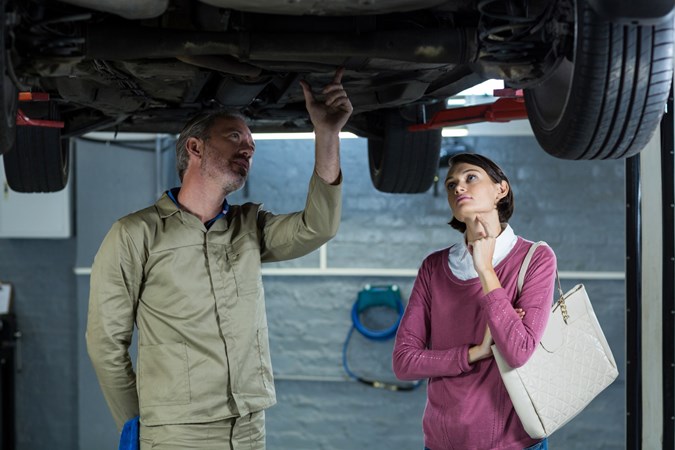
Looking for more jargon-busting motoring meanings? Head over to our Parkers Car Glossary page and take a look at our other definitions.
Just so you know, we may receive a commission or other compensation from the links on this website - read why you should trust us.






















